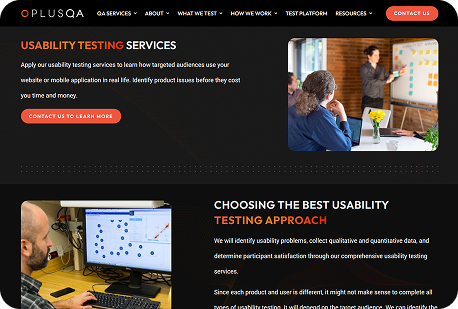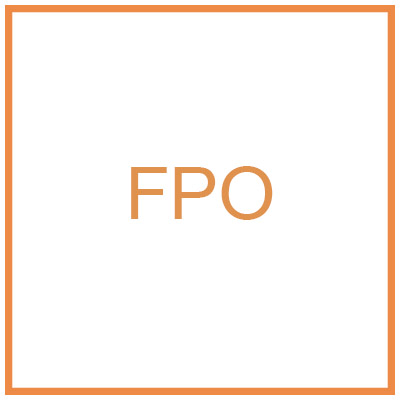Most usability problems don't break your product. They can, and will, take away from the user experience. A confusing menu. A button nobody notices. A checkout flow that gets abandoned with a full cart. It's the kind of thing that quietly chips away at engagement until users stop coming back.
Usability testing provides a preview of how people will interact with your website or application. It helps you understand why they click the wrong thing, scroll past your CTA button, or hesitate to check out. That's where real insights spark.
With usability testing tools, you can watch, ask questions, and collect real feedback. In recent years, these platforms have evolved. They are now more powerful, cheaper, and more flexible for teams of all sizes. Modern usability tools, such as screen recordings and moderated sessions, help teams understand how users behave.
In this post, we'll highlight the top usability platforms of 2025, including PLUS QA's in-house services. You will see what each one brings to the table and get simple guidance to find the best fit for you.
PLUS QA Usability Testing Services
PLUS QA offers usability testing with real users on real devices. We deliver quick feedback that helps teams catch trust-eroding issues users might never report. Unlike automated platforms, our method combines technical expertise with a human touch in every session, whether remote or in-person. We understand how users truly experience digital products.

Key Features:
- Access to a diverse group of testers from various demographics and backgrounds
- Testing conducted on real devices, not emulators or virtual machines
- Moderated and unmoderated sessions available, including extensive in-person studies at our Portland facility
- Testers trained in QA fundamentals, enabling them to spot complex usability issues
- An integrated approach that connects usability with functional and accessibility testing
Pricing:
Usability testing through PLUS QA is customized to meet your project's specific needs. Contact us to learn more about pricing and how to get started.
Lookback
Lookback is a remote research platform that focuses on live and asynchronous user testing. It works for teams that want to watch participants during product interactions. They can also take notes together and revisit recordings later.

Key Features:
- Live interviews with built-in note-taking and timestamped insights
- Unmoderated testing options for quick, flexible feedback
- Observer mode for stakeholder collaboration during sessions
- Auto-generated video recordings and highlight reels
Pricing:
Plans start at $25 per month for solo researchers, with team plans beginning at $149 per month. Enterprise pricing is available for larger usage needs.
Hotjar
Hotjar helps visualize user behavior with heatmaps and recordings. This makes it a favorite among marketers, designers, and UX teams. They use it to understand how people engage with websites.

Key Features:
- Heatmaps for tracking user clicks, taps, and scrolls
- Session recordings to observe navigation behavior
- On-site surveys and feedback widgets for contextual input
- User interview scheduling via Hotjar Engage
Pricing:
A free plan includes basic heatmaps and recordings. Paid plans start at around $32 per month, scaling up based on page views and session volume.
Optimal Workshop
Optimal Workshop focuses on information architecture testing. They provide tools for card sorting, tree testing, and first-click analysis. It is beneficial for UX researchers focused on navigation and content structure.

Key Features:
- Card sorting and tree testing tools to evaluate IA clarity
- First-click testing and surveys for rapid feedback
- Recruitment services or bring-your-own participants
- Visual reports with segmentation and benchmarking
Pricing:
Free trials are available. Paid plans start around $107 per month per user for teams.
UX Metrics
UX Metrics is a usability testing tool centered around quantifying the user experience. It's for teams that want to track metrics such as task completion rates, time spent on tasks, and error frequency over time.

Key Features:
- Standardized UX metrics tracking across sessions
- Task setup and structured flow creation
- Longitudinal reporting for ongoing UX monitoring
- Designed for integration with other research tools
Pricing:
Custom pricing is available upon request.
Loop11
Loop11 enables unmoderated usability testing with a focus on task-based journeys. It's designed for quick, flexible studies. Participants complete tasks, and the platform collects and analyzes the data.

Key Features:
- Task-driven unmoderated usability testing
- Real-time analytics and heatmaps
- Mobile, desktop, and tablet support
- Participant panel or bring-your-own option
Pricing:
Plans start at $199 per month, with pro and enterprise options available.
Maze
Maze offers rapid, unmoderated testing and integrates seamlessly with design tools like Figma. Its AI reports and task success metrics make it popular with product teams working on prototypes.

Key Features:
- Quick setup with design tool integrations
- Unmoderated usability tests, surveys, and card sorting
- AI-generated reports with metrics like task success and time-on-task
- Unlimited testers on paid plans
Pricing:
Maze has a free tier with limited usage. Paid plans start at $99 per month.
UserTesting
UserTesting is a powerful platform for teams looking to gather usability insights quickly. It offers both live interviews and self-guided tests. Organizations with sizable research needs — and budgets to match — use it to reach a broad, diverse pool of users.

Key Features:
- A large panel of global participants
- Moderated and unmoderated testing options
- Live interviews and self-guided tests with video recordings
- Dashboard with searchable insights and team collaboration
Pricing:
There are multiple plans available. You’ll have to reach out for pricing.
UserBrain
UserBrain is a budget-friendly usability testing platform that makes it easy to run simple, remote tests. It's a good option for teams that need regular, straightforward feedback from real users.

Key Features:
- Remote testing with recorded task walkthroughs
- Access to UserBrain's participant panel or use your own testers
- Automated scheduling and rolling test results
- Lightweight dashboard for managing studies
Pricing:
A free plan is available. Paid plans start at $99 per month.
Which Usability Testing Platform Should You Use?
The best usability testing platform for your team depends on what you need most. If you're looking for metrics and speed, Maze or Loop11 are great options. Hotjar is ideal for creating heatmaps and analyzing user behavior. If your work focuses on navigation and content structure, Optimal Workshop can get the job done. And if you need full-scale moderated sessions or a large participant pool, UserTesting and Lookback are solid choices.
Tools are great for data. But sometimes, what you need is a human tester who can tell you what's working, what's not, and why it matters. Our trained analysts will spot issues that automated tools often miss.
Contact us to learn how our usability testing can support your next launch or update.

